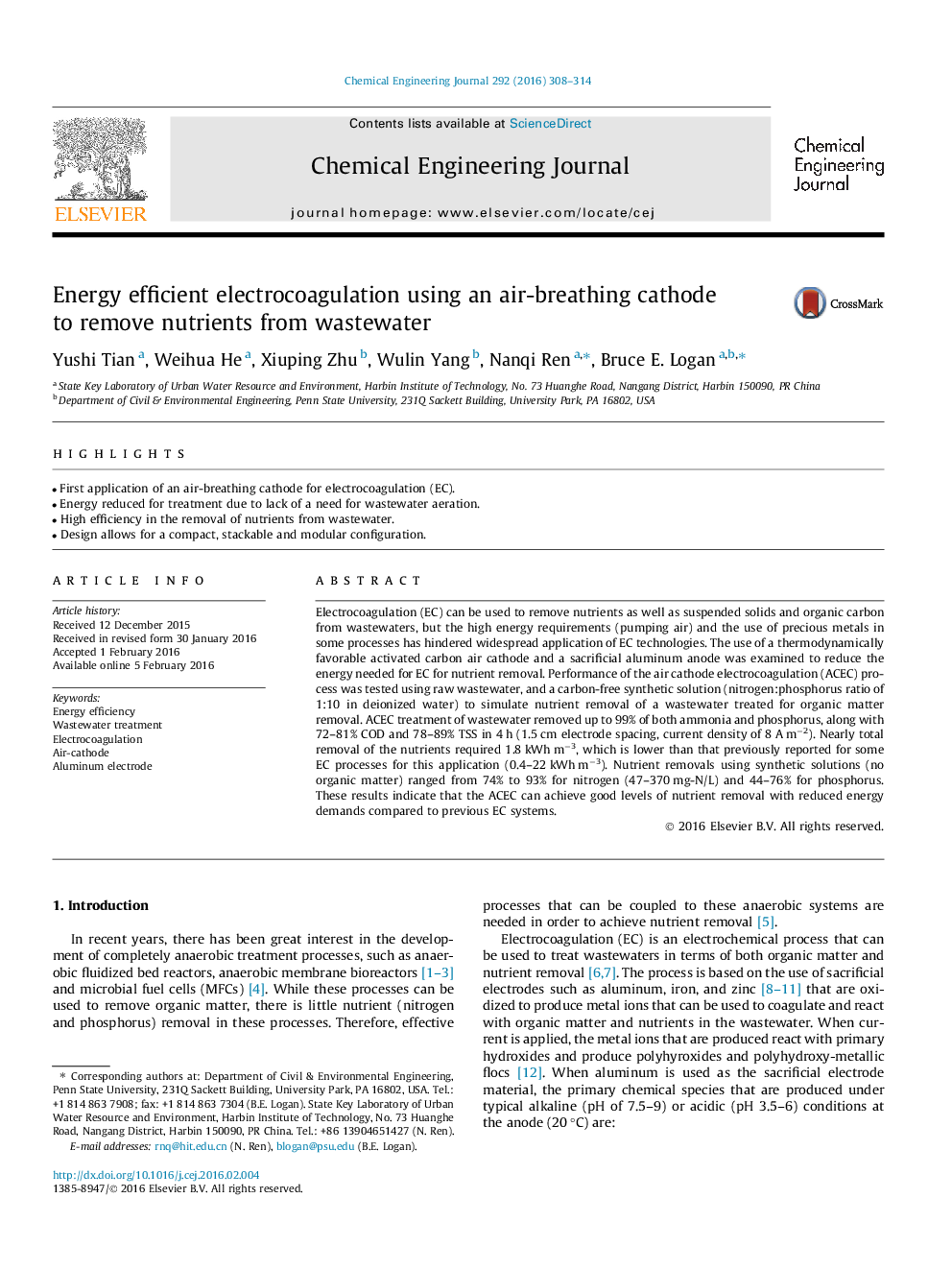| Article ID | Journal | Published Year | Pages | File Type |
|---|---|---|---|---|
| 145672 | Chemical Engineering Journal | 2016 | 7 Pages |
•First application of an air-breathing cathode for electrocoagulation (EC).•Energy reduced for treatment due to lack of a need for wastewater aeration.•High efficiency in the removal of nutrients from wastewater.•Design allows for a compact, stackable and modular configuration.
Electrocoagulation (EC) can be used to remove nutrients as well as suspended solids and organic carbon from wastewaters, but the high energy requirements (pumping air) and the use of precious metals in some processes has hindered widespread application of EC technologies. The use of a thermodynamically favorable activated carbon air cathode and a sacrificial aluminum anode was examined to reduce the energy needed for EC for nutrient removal. Performance of the air cathode electrocoagulation (ACEC) process was tested using raw wastewater, and a carbon-free synthetic solution (nitrogen:phosphorus ratio of 1:10 in deionized water) to simulate nutrient removal of a wastewater treated for organic matter removal. ACEC treatment of wastewater removed up to 99% of both ammonia and phosphorus, along with 72–81% COD and 78–89% TSS in 4 h (1.5 cm electrode spacing, current density of 8 A m−2). Nearly total removal of the nutrients required 1.8 kWh m−3, which is lower than that previously reported for some EC processes for this application (0.4–22 kWh m−3). Nutrient removals using synthetic solutions (no organic matter) ranged from 74% to 93% for nitrogen (47–370 mg-N/L) and 44–76% for phosphorus. These results indicate that the ACEC can achieve good levels of nutrient removal with reduced energy demands compared to previous EC systems.
